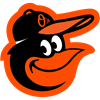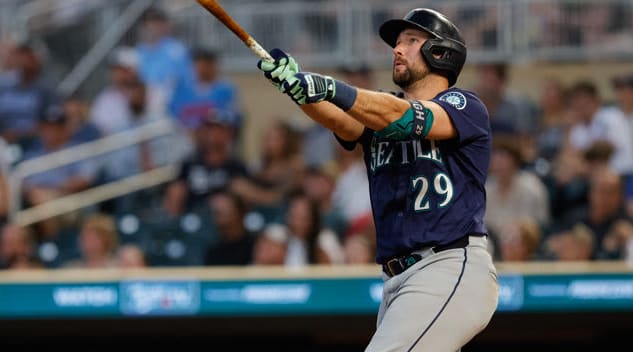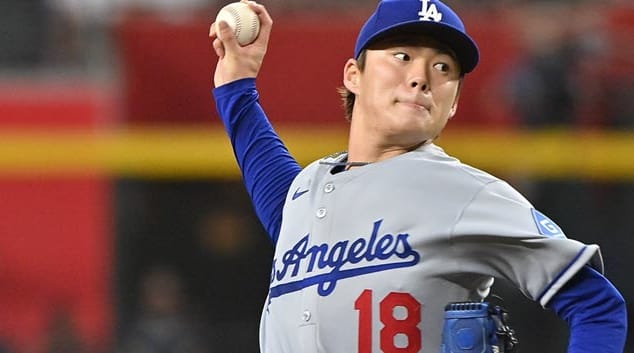Last week, I used velocity data to adjust projected stats. Commenter TeamCavanagh asked "Do you think that there is a similarly straightforward way to associate a hitter's 'bat speed' with an increase or decrease in power or line-drive rate?". The short answer is no, there is no straightforward easy way to see if a hitter is losing bat speed. An answer may be found by working backwards to see if all the available data points to more power, or if there are any discrepancies. The final answer will be a combination several factors.
When looking at power, it must be understood that the aging curve for power has changed recently. In the post-PED era, power peaks earlier in a player's career (age 22) than before (age 25). The reason for this change has not exactly been determined (better pre-MLB conditioning?). We should not expect a player to peak later in their career with a new level of power numbers, as the decline begins fairly early.
To step through the various pieces of hit related data, I am going to use Victor Martinez and Jay Bruce as examples. Additionally, I will start off by using ISO as my indicator for the pair having less power/bat speed. Victor Martinez has a .244 ISO which is a career high for him. Jay Bruce is at the other end of the spectrum with his ISO at a career low of .162.
Any indicator can be used to inquire about a player hitting the ball
Last week, I used velocity data to adjust projected stats. Commenter TeamCavanagh asked "Do you think that there is a similarly straightforward way to associate a hitter's 'bat speed' with an increase or decrease in power or line-drive rate?". The short answer is no, there is no straightforward easy way to see if a hitter is losing bat speed. An answer may be found by working backwards to see if all the available data points to more power, or if there are any discrepancies. The final answer will be a combination several factors.
When looking at power, it must be understood that the aging curve for power has changed recently. In the post-PED era, power peaks earlier in a player's career (age 22) than before (age 25). The reason for this change has not exactly been determined (better pre-MLB conditioning?). We should not expect a player to peak later in their career with a new level of power numbers, as the decline begins fairly early.
To step through the various pieces of hit related data, I am going to use Victor Martinez and Jay Bruce as examples. Additionally, I will start off by using ISO as my indicator for the pair having less power/bat speed. Victor Martinez has a .244 ISO which is a career high for him. Jay Bruce is at the other end of the spectrum with his ISO at a career low of .162.
Any indicator can be used to inquire about a player hitting the ball with consistently hard contact. It may be their total home runs, HR/FB ratio, it could even be from an untrained scouting eye watching a game. For whatever reason a person has for the inquiry, the process is the same. I will start with results-driven numbers and then transition to more process-related values.
ISO (SLG-AVG): It doesn't get any easier than to look at how many extra-base hits a player is getting per hit. I find ISO one of the best, quick stats to look at for power.
One item to remember with ISO power, it has two components, mostly power and a little speed. The added ability of a fast runner to take an extra base on a hit in the gap can make it appears as though they have gained some power. The speed component needs to be removed from the power numbers. This can be done by using this simple formula:
"... for every increase or decrease in a player's Speed Score by one, a hitter's doubles and triples ISO changes 0.005 on average in the same direction."
With Speed Scores ranging from 1 to 10, the most a player's ISO could change is +/- .050.
Martinez and Bruce Analysis: Since we used ISO as our indicator, we know both are at new levels. Additionally, speed is not affecting either player's ISO. Martinez's Speed Score is barely up from a 1.6 career average to 2.2 this season. Bruce's value is at a career high of 5.6, so his speed should actually be inflating his ISO.
HR/FB%, FB%/LD%/GB% Mix: Start with the HR/FB%. Is this number within a reasonable value considering the player career norms? Basically, is the player hitting flyballs with enough authority to leave the yard? Values will jump around. An increase or decrease of 50% is usually a threshold I set to determine if there has been a significant change in home run rate.
The next item to look at is the FB%/LD%/GB% mix for each player. The first item to examine is the GB%. Basically, I want to see the player hitting the ball in the air via a flyball or a line drive. Few if any groundballs go for extra-base hits. If a player has a good HR/FB%, but is hitting more groundballs, their overall home run total will be down. Next, I give a quick glance at LD%. The problem with line drive numbers is they are one of the last hitting stats to stabilize (LD% takes about two years worth of data).
Martinez and Bruce Analysis: Martinez has seen a huge jump in his HR/FB% (16%) compared to his last couple of seasons (each at 7%). Also, his home run numbers are being helped with a sub-1 GB/FB ratio (the third of his career). Finally, his LD% is at his career average of 21%.
For Bruce, his HR/FB% is at career low of 15%, but not too far off his career average of 17%. The main cause for the lack of home runs is a huge jump in his GB/FB ratio to 1.5. His career value is 0.9. He is not going to hit for a ton of power with 47% of his hits being on the ground. His LD% (21%) is just over his career average (20%).
Batted Ball Distance: It is time to send everyone over to my website, Baseballheatmaps.com. I have taken MLB's batted ball data and determined the average distance traveled for two factors, home runs and flyballs and all batted balls. With home run and flyball distance, I used it as a proxy to help determine HR/FB%. The distance traveled on all non-bunts was used to see how hard the batter is hitting all balls. The further the ball goes to be fielded, I am assuming it was hit harder. I have leaderboards (HR&FB and Total) created for some hitters and if someone isn't on the list, the data can be run individually. With this data, a person is just looking to see a general direction of the data is headed compared to previous values.
Martinez and Bruce Analysis: Here are the values for each hitter:
Martinez
Season: HR&FB, Total Distance
2011: 278, 192
2012: DNP
2013: 285, 199
2014: 294, 205
Bruce
Season: HR&FB, Total Distance
2011: 286, 206
2012: 292, 213
2013: 293, 203
2014: 285, 196
Both players' distance numbers are trending in the same direction of their power stats. Martinez is getting more distance on his batted balls and Bruce is getting less. If you compare the change from 2013 to 2014, they almost swap values.
Max Home Run Distance: Not all home runs are the same. I find value in knowing a hitter's maximum distance traveled. For this value, I go to Hit Tracker and find the max distance traveled from each of the past few seasons. Basically, I am just looking to see just how hard the player can possibly hit the ball.
Martinez and Bruce Analysis: Again, here are the values for each player:
Martinez
Season: Max distance
2011: 429 ft
2012: DNP
2013: 444 ft
2014: 424 ft
Bruce
Season: Max distance
2011: 453 ft
2012: 441 ft
2013: 469 ft
2014: 435 ft
Martinez is showing some signs of the underlying skill set not matching his overall results. His furthest hit HR is just not as far as in previous seasons. Bruce continues his trend of showing decline with the lowest top distance over the the past four seasons.
Hard hit data: Well, this step involves a person to follow Mark Simon on Twitter. Mark has Inside Edge data and puts out a hard hit ball leaderboard at random times. Here is the last one he released:
Updated MLB hard-hit rate leaderboard. Intriguing names/ranks include Duda, Brantley, Norris & more pic.twitter.com/OncjTNTnpA
— Mark Simon (@msimonespn) August 4, 2014The data is not comparable from year-to-year yet, but it's possible to get an idea where a player may stand (he doesn't include all players). Again, it is just another piece of information to consider.
Martinez and Bruce Analysis: On the above list, Martinez is the top rated player with over 25% of his batted balls being hard hit. Bruce on the other hand is hitting the ball hard just under 20% of the time.
Putting it all together
By taking all of the above information, a fantasy owner can see if everything lines up and then give a snapshot of the player's power. I will go through the procedure for Martinez and Bruce for an example on how it looks at the end.
Victor Martinez is hitting the ball in the air more often (decreased GB%) with more authority (increased HR&FB distance and total distance, a league leading hard hit rate). Even though his maximum home-run distance is down, it's easy to justify his higher ISO and HR/FB%.
Jay Bruce is hitting for less power than in recent seasons (decreased HR&FB distance, total distance, max home run distance, and HR/FB%). Additionally, his GB% has jumped from 37% to 47% this season. The combination of less power and fewer ground balls has led to his drop in isolated power and total home runs.
There is no perfect measure for bat speed (especially with Hit f/x data not publicly available). To get an idea if a player is hitting the ball hard, several factors need to be taken into consideration. After going through each possible factor and combining them, we can get a better idea of how a hitter's power stroke should be trending. The process is not perfect, but for now it is all we have.



























